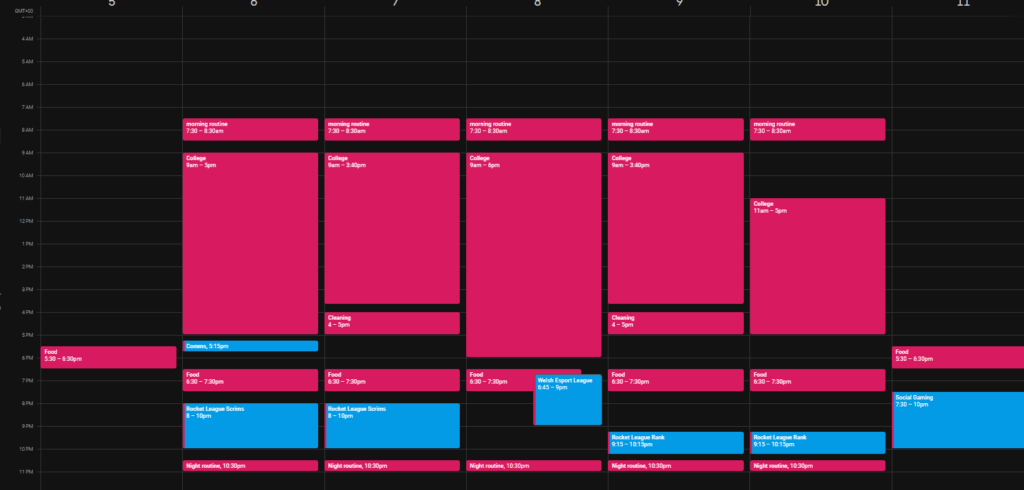

Just like with any sport, becoming a top-level esports player takes hard work, dedication, and a lot of practice. In this article, we’ll discuss how to set up a practice schedule as an esports player.
Step 1: Determine Your Goals Before you can set up a practice schedule, you need to determine what your goals are. Are you looking to improve your individual skills, or are you part of a team that needs to work on coordination and teamwork? Are you training for a specific event or tournament, or are you looking to improve your overall gameplay?
Once you’ve established your goals, you can start to build a practice schedule that is tailored to your needs.
Step 2: Identify Your Weaknesses To improve your gameplay, you need to identify your weaknesses. This can be difficult, as it requires an honest assessment of your skills. Ask yourself where you struggle in the game, what areas you need to improve, and what mistakes you make regularly.
Once you’ve identified your weaknesses, you can focus your practice sessions on improving in those areas.
Step 3: Create a Schedule With your goals and weaknesses in mind, it’s time to create a practice schedule. This schedule should be realistic and tailored to your specific needs.
Start by blocking out a certain amount of time each day for practice. This could be an hour or two, depending on your other commitments. Make sure to schedule practice time around other obligations like work or school.
Next, determine what you will focus on during each practice session. If you’re working on individual skills, focus on things like aim, movement, and map knowledge. If you’re part of a team, focus on coordination, communication, and strategy.

Finally, create a long-term plan that outlines what you hope to achieve over the next few weeks or months. This plan should be flexible, as you may need to adjust your goals and schedule as you go.
Step 4: Stick to Your Schedule Creating a practice schedule is one thing, but sticking to it is another. To make the most of your practice time, you need to be consistent and disciplined.
Set reminders on your phone or computer to help you remember when it’s time to practice. Treat your practice time like any other appointment or obligation and make it a priority.
If you find that you’re struggling to stick to your schedule, try enlisting the help of a friend or coach. Having someone hold you accountable can be a great motivator.
Step 5: Track Your Progress Finally, it’s important to track your progress as you practice. Keep a log of your practice sessions and note any improvements you’ve made. This can be a great way to stay motivated and see how far you’ve come.
If you’re part of a team, make sure to track your progress as a group as well. This can help you identify areas where you need to improve as a team and celebrate your successes together.
Setting up a practice schedule as an esports player is crucial if you want to improve your skills and compete at a high level. By identifying your goals and weaknesses, creating a schedule, and sticking to it, you can make the most of your practice time and see real improvements in your gameplay.